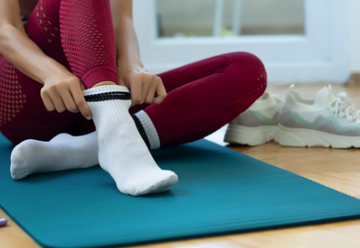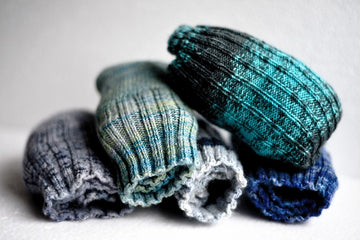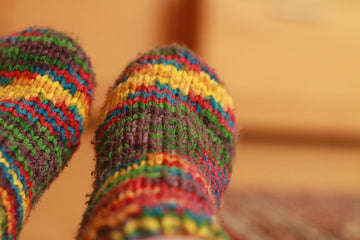
Wearing compression socks offers numerous benefits, from improved circulation and reduced swelling to supporting leg health and recovery. However, ensuring a proper fit is crucial to maximize these benefits and achieve optimal comfort. This guide will walk you through the step-by-step process of measuring yourself for compression socks, ensuring you select the perfect size for your needs.
How to Measure for Compression Socks
Measuring for compression socks is important to ensure a proper fit and effectiveness.
Determine Compression Level
Compression socks come in different compression levels (measured in millimeters of mercury, or mmHg). Consult with a healthcare professional to determine the appropriate compression level for your needs.
Measure Your Ankle Circumference

Use a flexible tape measure to measure the circumference of the smallest part of your ankle, typically just above the ankle bone. Make sure the tape measure is snug but not too tight.
Measure Your Calf Circumference

Measure the widest part of your calf. Again, ensure the tape measure is snug but not overly tight.
Measure Your Leg Length

Sit down and measure the length of your leg from the floor to the back of your knee (where the bend is). This measurement ensures that the compression sock will fit properly without bunching or rolling down.
Consult Sizing Charts
Different brands may have slightly different sizing charts, so it's essential to refer to the specific sizing chart provided by the manufacturer of the compression socks you're interested in.
Select the Correct Size
Based on your measurements and the sizing chart, choose the appropriate size of compression socks. If your measurements fall between sizes, consider the fit you prefer and whether you'd like a tighter or more relaxed compression.
Try Them On
Once you receive the compression socks, try them on to ensure they fit comfortably. Make sure there are no wrinkles or bunching, and the socks should feel snug but not painfully tight. If possible, walk around in them to ensure they provide the right level of support without slipping or sliding down.
Check for Proper Fit
The compression socks should feel snug but not excessively tight. They should provide compression evenly across your ankle and calf without cutting off circulation or causing discomfort.
By following these steps, you can ensure that your compression socks fit properly and provide the support and benefits you need.
What Does 20 to 30 Mmhg Compression Socks Mean
Compression socks are rated in terms of millimeters of mercury (mmHg), which indicates the amount of pressure they exert on your legs. 20-30 mmHg Compression is considered moderate to firm. It applies higher pressure compared to lower compression levels, ranging from 20 to 30 millimeters of mercury. These socks are suitable for various purposes:
- Sports Recovery: After intense physical activity, wearing 20-30 mmHg compression socks can help with muscle recovery by promoting blood circulation and reducing swelling.
- Daily Wear: They can be worn daily for prolonged periods, especially if you're on your feet a lot or have jobs that require long hours of standing or sitting.
- Medical Recovery: These socks are often recommended for medical recovery purposes, such as post-surgery or during rehabilitation, to aid in reducing swelling and preventing blood clots.
- Management of Varicose and Spider Veins: They are effective in managing mild to moderate symptoms of varicose veins and spider veins by providing consistent compression to support vein function and prevent further progression of the condition.
Overall, 20-30 mmHg compression socks offer a balance between support and comfort, making them versatile for various activities and medical needs. However, it's important to consult with a healthcare professional to determine the appropriate compression level for your specific condition and needs.
Is It Better to Size up or down in Compression Socks
Choosing a size that puts your calf measurement in the middle of the sizing range can be a good starting point. This ensures that the compression garment provides adequate compression without being overly tight or loose.
How Do You Know if Compression Socks Fit Right
You can tell if compression socks fit right if they provide a comfortable, snug sensation akin to a gentle hug on your legs. The compression should be graduated, meaning it's tighter at the ankle and gradually lessens as it moves up the leg. They should feel supportive without being overly tight or restrictive, allowing for comfortable movement and improved circulation.
What Happens if You Wear the Wrong Size Compression Socks
Wearing the wrong size compression socks can lead to various discomforts and potential health issues. If the socks are too tight, they can restrict blood flow and cause discomfort, pain, or even cut off circulation. This can result in minor bruising, skin ulcers, or other skin irritations. Additionally, tightly fitting socks may cause dry skin, redness, and itching due to the pressure exerted on the skin. It's essential to choose the correct size of compression socks to ensure proper fit, comfort, and effectiveness in promoting circulation and reducing swelling.
Why Do My Legs Still Swell with Compression Socks
If the compression socks are too big, they may not provide enough compression to effectively reduce swelling. Ensure you have measured your legs accurately and chosen the correct size according to the manufacturer's guidelines.
Different compression levels are suitable for different needs. If your compression socks are not providing enough pressure, you may need a higher compression level to effectively reduce swelling.
Make sure you are wearing the compression socks correctly, with the tightest part around your ankle and gradually decreasing pressure as it moves up the leg. Improper wearing can reduce the effectiveness of the compression.
If your legs continue to swell despite wearing compression socks, it's essential to consult with a healthcare professional for further evaluation and guidance. They can help determine the underlying cause and recommend appropriate treatment options.
Final Words
By following these simple steps and carefully considering the information provided, you can confidently choose the right size compression socks. Remember, a proper fit is essential for comfort, effectiveness, and overall leg health. If you have any concerns or require further guidance, don't hesitate to consult with a healthcare professional. They can assist you in determining the appropriate compression level and answer any questions you may have.
Read More:
How to Measure for Compression Socks
How Do Compression Socks Work
Why Do My Legs Ache After Wearing Compression Socks
How to Put On Compression Socks
When to Put on Compression Socks for Flying
Are Flight Socks the Same as Compression Socks







